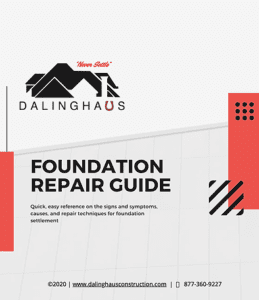Good old clay soils. Clays are great for making flower pots and cups, but to use as an ideal soil type for your home’s foundation would not be the best choice.
Clay soils are very reactive to water. They act like a sponge in many of their physical characteristics. Just like a sponge will expand when water is present, clay soils will be act in a similar fashion. Depending on the density of the clay, they are able to absorb a lot of water. Once clay soils hit their absorption limit, they will produce ponding or run off of the excess water. This can then lead to additional grooves and channels to be created around your property. Take a look around your home the next time it rains and check out how your soil reacts to the water the is presented.
When sponges dry out, they can become very rigid and are far more brittle. Just like a sponge, the clay soils react in the same way. Check out the picture in this article. This is from a home in Fullerton that we visited late 2019 before we had the rains in March. You can see the cracks that are present in the soil from drying out. When clay soils dry out they can easily be compromised and will settle a bit. The continued expanding and contracting of the clay soils is what causes your home’s foundation or concrete walkways and driveways to start moving.
Although the impact of clays expanding and contracting has your home and concrete surfaces to ability to move, it typically does not have immediate impacts on either of them. It usually takes years of this expanding and contracting to start to notice the impacts of the clay soils reacting to water being introduced or excluded to have an effect on your property. The best thing to do is mitigate the amount of water that you can. Adding gutters, drainage, and run off areas are going to be the best solution to limit the impact of the clay soils. Get the water away from your home and the surrounding concrete walkways and driveways.






